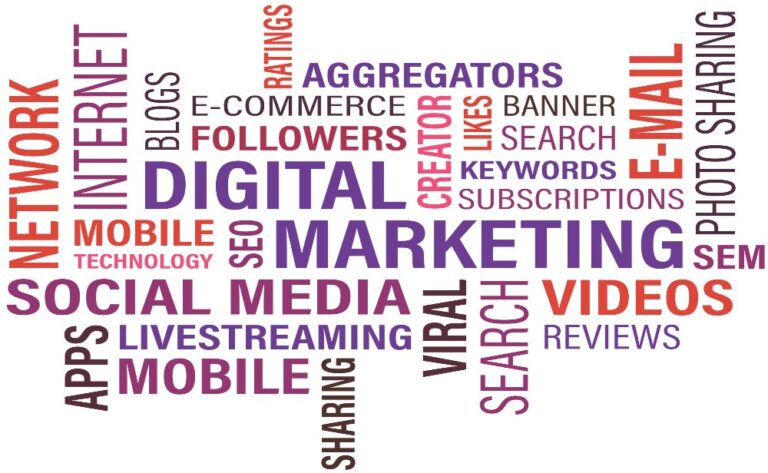The Importance of Zero-party Data
When it comes to data, the world is undergoing a period of transition. Consumers’ concerns about their personal information’s privacy and safety have risen to the forefront in recent years, and as a result, many are becoming less willing to share their information with companies and brands.
According to the report titled “Building Consumer Confidence Through Transparency and Control” 2021 published by Cisco, nearly half of consumers have the impression that they are unable to protect their data, with the majority (76%) stating that the primary reason for this is that “it’s too hard to figure out what companies are doing with my data.”
In addition to the fact that third-party cookies will stop functioning in 2024, marketers require new methods of data collection that are not only trustworthy but also compliant with privacy regulations. What is the answer? Zero-party data is a vital resource for companies operating in all industries and a more effective means of establishing connections with potential clients and patrons.
What exactly is meant by “zero-party data”?
What exactly is meant by the term “zero-party data”? Clark Boyd, a digital strategy consultant, author, and trainer, provides the following definition for it: “Z.” “The term “ro-party data” refers to information that a customer voluntarily and intentionally shares with a business. The consumer is actively involved in the process and willingly shares information with the company, elevating this type of data to a higher tier than the other types of data with which we are familiar.”
Because this information is voluntarily provided, the accuracy of the data collected is not called into question. It is neither invasive nor covert, and it gives customers more direct control over the information about them that is collected. The use of zero-party data in marketing may be the way of the future for businesses.
What are some examples of data with zero-party involvement?
In contrast to other types of data, zero-party data is given by the customer themselves in a direct and voluntary manner. Signups for newsletters, email subscriptions, and text message subscriptions are all examples of zero-party data. So are quizzes, polls, and survey responses, as well as lead generation forms seen on social media and other channels.
• Calculators (like a calculator for a mortgage),
• Online Tests,
• Downloads (such ebooks or presentations), and
• Online Chatting
The question now is, what exactly is the distinction between first-party data and zero-party data?
Contrasted with first-party data are zero-party datasets.
Because there are no third-party cookies, many businesses are shifting their focus to first-party data in order to maintain compliance with legislation and safeguard the privacy of their users. First-party data, which are an important data source, are distinct from third-party data in several aspects, including the following:
Why is it vital to have zero-party data?
The significance of data obtained from zero-party sources is increasing as a result of a number of causes. The first of these is the passing of privacy laws that are applicable to digital channels, particularly social media, such as GDPR in Europe (have a look at this GDPR checklist for its impact on marketers) and CCPA in the United States. These laws apply to the collection, storage, and use of personal information.
The kind of data that marketers are allowed to acquire about online users will be subject to regulation as a result of these regulations, as well as similar regulations in other parts of the world. It also has an effect on how data can be used and, in some instances, it implies that businesses will be required to erase information if a client makes such a request.
Apple is also managing data by restricting the ability of data aggregators and social media platforms to acquire information from Apple devices like the iPhone. This is in contrast to Google, which will stop permitting third-party cookies in 2024.
In a similar vein, all social media networks like as Facebook, Twitter, and TikTok are required to comply with new regulations that place restrictions on the uses that can be made of data that is provided on these channels unless express permission to do so is given. According to a research by Verizon Go, in response to recent data breaches on social media sites, 69 percent of consumers have either deleted or seriously considered deleting their social media accounts.
As customers become more concerned about the security of their personal information, the use of ad blockers has also increased. According to Statista, in the year 2021, the percentage of people in the United States who use ad blockers on their computers is 51%, while the percentage of people who use them on their smartphones is 30%. This is something that is only going to increase as more companies compete for people’s attention online.
How do you go about collecting data from zero-party sources?
Because the environment is always changing, businesses have to put the quality and veracity of the data they gather at the top of their priority list. The use of zero-party data has a multitude of advantages and contributes to the development of consumers’ trust, but it also has the potential to establish a reputation. The following are some efficient methods for collecting data from zero-party interactions:
• Use forms on your website. These forms may be for a free trial of a product or to download a guide.
• Drive online registration. This could be for an event or webinar that you are hosting.
• Drive online registration. This could be for an event or webinar that you are holding.
• Social media polls – these are particularly effective on Twitter and Instagram and can help provide insights about a brand or product
• Email campaigns – re-engage people on your database with a ‘sorry you missed out’ message or discount offer to get them back in the system and provide additional data or use email to build customer loyalty
• Conversational pop-ups – these can drive interaction with a consumer and are particularly useful on Twitter and Instagram
• Pop-ups – these can drive interaction with a consumer (e.g. offer a discount in return for an email address)
• Contests: people love free stuff, and you might provide a contest in exchange for data across channels including social media.
• Surveys: after a customer has made a purchase, you can re-engage with them by sending them a survey to gather their comments on a product or service.
• Virtual try-on – These tools are wonderful for interaction and can lead to offering a free trial or another option at the conclusion of the process. Virtual try-on The augmented reality tool that optical retailer Warby Parker offers, which you can find below, is an excellent example.
Zero-party data strategy
What do you do with the zero-party data once it’s been collected and stored in your database? You already know what it is and how to collect it.
It is imperative to have a customer-centric zero-party data strategy at the core of your business. Since the data is given voluntarily and can be viewed, the customer flow may be able to be simplified.
It is possible to include it into marketing operations and campaigns, just like any other kind of data. In contrast to other kinds of data, you have the ability to create messaging and content that is highly personalized by:
1. Retargeting ad campaigns
2. The development of miniature experiences
3. Create a tailored experience for website visitors
4. Assign an individual user characteristic to each email campaign
5. Utilize preference analysis by forming A and B groups
6. Investigate the relationship between turnover and consumer behavior
7. Improve customer experience
Zero-party data examples
Let’s take a look at some fantastic examples of brands that have collected and used zero-party data to create engagement in order to provide you with some ideas for your own efforts.
1. Sephora – instructions and quizzes
Sephora, a well-known beauty retailer, goes above and above to learn more about their clients. The company creates purchasing recommendations and quizzes on its website, which let website users to learn more about their skincare regimen, fragrance preferences, and brow needs.
The following is an example of a fragrance quiz that assists individuals in determining their preferred aroma. You will first be asked three easy questions, and then at the end of the test you will be given some product recommendations that you can buy.
Customers are prompted to sign up for offers (that’s zero-party data right there!) or create a community account on Sephora, which encourages members to share, as a result of this approach’s participatory nature, which also fosters trust.
2. Yelp – goes local
Yelp’s mission is to match customers with local businesses that they will genuinely like patronizing. Through the use of the company’s mobile application, consumers are given the opportunity to create a preference center that allows them to specify their dietary, lifestyle, interest, and accessibility choices.
Yelp then uses its zero-party data to connect a business such as a restaurant or coffee shop with the choice of a customer in order to give a perfect match. Examples of businesses include: restaurants and coffee shops.
3. Free individualized service at Mamas and Papas retail locations
Customers who are expecting a child are the ones who are most interested in receiving guidance and advice. The nursery brand Mamas and Papas wished to capitalize on this demand and provide a solution by making their personal shopping service, which can be scheduled online for free, available to customers.
A user can take advantage of this offer to have a private consultation in-store by selecting their preferred location, day, and time for the appointment. Customers are required to enter their personal data, which includes the date that they are expecting their child, in order to finish the booking process.
Due to the fact that the brand has access to the zero-party data, it is able to re-engage with the customer following the consultation both before and after the birth of the child in question.
4. The Ask and Guide program of the Business Development Bank of Canada
Because of the intense competition in the financial industry, it is essential to have a solid understanding of the requirements and preferences of individual customers. The Company Development Bank of Canada (BDC) utilizes the question “What’s your business goal?” as a way to assist users through the application process on their website. This is done in order to attract potential customers.
The user will be directed to the content that is the most pertinent to their question, which may include articles, toolkits, quizzes, and online calculators, depending on the response they choose. With the help of this experience, it is possible to collect data that customers have willingly provided in order to communicate with and engage them.
As can be seen from the aforementioned illustrations, there are numerous strategies that may be utilized in order to acquire zero-party data in a variety of business settings. Because of this, you will be able to construct more effective user journeys and customise your messaging in order to increase conversions and revenues.







